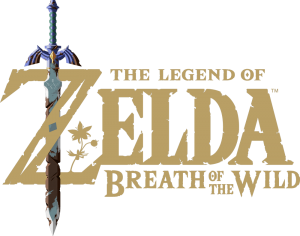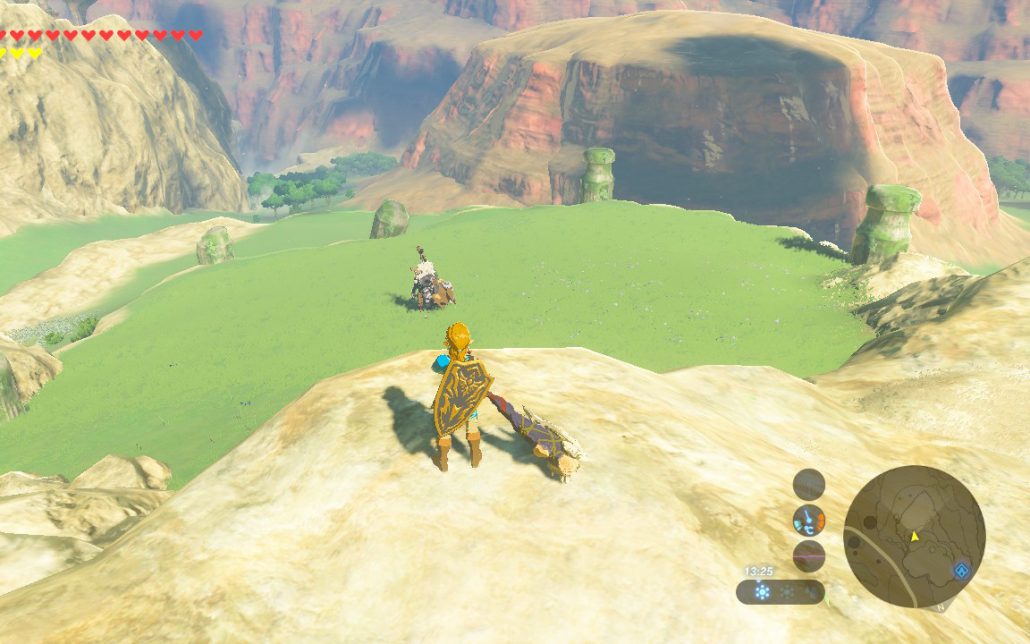Trending
Opinion: How will Project 2025 impact game developers?
The Heritage Foundation's manifesto for the possible next administration could do great harm to many, including large portions of the game development community.
What can Usability bring to The Legend of Zelda: Breath of the Wild? Let's see how to teach the player to be free with some simple concepts that can point out strengths and weaknesses in any game.

This blog post was originally published on LudoTIC's website (In french too).

We sometimes see some articles about the meaning of User Experience in games, and it's usefulness. I'm a U.X. Designer at LudoTIC and I want to share with you what this field can bring to a game project and maybe some insight on game development in an accessible way.
Each month, we present a game’s review using our tools and expertise: our Game Usability Review (Game U.R. for short). The goal of these reviews is to find out what is good or bad, to uncover problems and discuss some solutions.
Game development is an art, here are some pieces of advice to turn your work into a masterpiece.
We use an internally developed method which sees a game from 3 points of view:
Usability: as a Human Machine Interface
Playability: as an object with playing potential
Gameplay: as a video game
For more details, see our related article!
You can see here our last review of Astroneer!
The Legend of Zelda: Breath of the Wild is an Action RPG in an open world environment made by Nintendo. You are Link (and not Zelda !) a knight of the Hyrule realm and you wake up with no memory and in your underpants. From there you will discover Hyrule and the epic quest that awaits you to save the realm and princess Zelda!
It is an open world RPG with some mechanics like The Elder scrolls series (Skyrim …) or The Witcher.
A common struggle in these games that we will focus on today is: “How to leave the player free to do what he wants while giving him something to do, so he doesn’t get bored”, let’s see how Breath of the Wild crushes this question.

The Legend Zelda: Breath of the Wild is out since March 3, 2017 on Wii U and Nintendo Switch. We reviewed it the first week after it’s release on the Nintendo Switch version.
A lot of reviewers gave the game a perfect score (like IGN or jeuxvideo.com), here is our review from a user experience point of view.
The Legend of Zelda games are about solving puzzles and enigmas. Breath of the Wild doesn’t fail the recipe and provide an enormous pool of things to solve. But what is interesting is that they each exert different amounts of cognitive load.
In short: the cognitive load is the amount of mental effort being used in the working memory, much like the R.A.M. in a computer, but in your brain.
Advice | Usually, in games and interfaces, it is best to minimize the cognitive load on the user. But Zelda Breath of the wild is a game about puzzles, so thinking is part of the fun. |
In the game, quests and objectives vary in importance:
The main quest (saving the princess, vanquish evil …) is guided very precisely, with targets on the map and frequents reminders about what to do next.
Very low cognitive load: we have nothing to remember except to follow the guide.
Some quests are more elusive, to challenge reasoning, but let us have the important elements in the quest log, like the general direction of a shrine or the text of the “song with a secret in it”.
Medium cognitive load: we have to think for ourselves and sometimes remember directions and patterns.
And there also are undocumented secrets and objectives, there is no log for them anywhere but in our memory and eventually a sheet of paper beside us.
High cognitive load: we have to memorize a lot and correlate information.
Good | These different levels of objectives can serve as difficulty levels, the main quests are easy to follow so we can finish the game without too much difficulty. But then, to solve and complete other objectives the game help decreases, and the difficulty rises. |
I know where to go and what to do |
I am reminded of what is needed |
I think I need to remember something for later ... |
Good | To enhance player’s performances the spaces are designed for what is inside them. For example, when a fight occurs, we are always in a big area to let us strategize, prepare ourselves or just run. On the other hand, enigmas are sometimes in a much smaller place to limit the possibilities to solve it in other ways and because we have the time to think and be precise. |
 Okay I’m ready, let’s kill this thing
Okay I’m ready, let’s kill this thing
In The Legend of Zelda: Breath of the Wild, to regain our life, we have to eat, and the dishes that give the most hearts or give bonuses are to be cooked in a cooking pot. It is a fun experience at first but it quickly becomes tedious after some time.
Warning | Cooking doesn’t respect these good practices for mental workload and player’s performances. It takes too much time and actions, dishes are really useful for progression so we want to have some with us. But for each dish we cook, we have to select one by one each ingredient and then cook them, which takes time.It doesn’t seem that big of a deal but, when doing it more than 10 times in a row, it feels very dull and it get’s easier for a bored player to get the recipe wrong.Another problem is that the only way to see a dish's recipe is to have this dish in our inventory. If we eat it, we can’t access the recipe anymore.People can’t remember easily a lot of recipes. This could force the player to have a sheet of paper beside him to note the recipes or just simply use the same two or tree very simple recipes he remembered. |
Advice | These problems could be solved with a “cooking interface” when interacting with a cooking pot, presenting the discovered recipes and offering to cook multiple dishes when possible. |
 Even link looks confused
Even link looks confused
The affordance is the degree with which something can suggest its use. (Example: when you see a button, you want to push it, not eat it).
Good | In The legend of Zelda: Breath of the Wild, we are constantly surrounded by possibilities. In almost every corner or every little hill in the horizon, we have something to see or do. And very often, we understand what it is really quickly. The game plays with our perception of what is uncanny and when we see a little something and think “heh maybe there is something around here ?”, there usually is. |
Advice | This design choice prompts the player to adopt an exploratory mood which can be a good way to enhance the player’s environment perception. |
While the game lets us free to choose our own strategy: where to explore, which monster to kill, who to help … It doesn’t leave us the freedom to choose IF we want to help people. Our choices are our avatar’s (Link) choices, and he is nice, and caring, and helpful. We can’t say to the "old lady" to carry her wood herself, Link will say “yes, I’ll help you”, and even if we run away after saying yes, the poor lady will just wait for us to come back with hopes in her eyes forever (and we don’t want that do we ? :’( )
Good | The feeling of freedom that comes with the game is so overwhelming, most of the time we don’t even notice the fact that we are somehow limited. The game offers so many opportunities, we find a new one every step along the road and most of the time, we end up zigzagging from one opportunity to another while we discover them on the go. |
Advice | Video games are full of rules and limitations. According to Salen and Zimmerman in Rules of Play: “A game is a system in which players engage in an artificial conflict, defined by rules, that result in a quantifiable outcome”, and most of the possibles definitions for a game include rules as a core part of it.The tricky part is to make the player believe he is free and unlimited by guiding him inside these rules and preventing him to encounter uncanny limitations. The Legend of Zelda: Breath of the Wild does it pretty well. |
An example of the exploratory mood with eye tracking
The story of The Legend of Zelda: Breath of the Wild is purely Manichaean (Morally dual), it is a fight of good versus evil and makes it really easy to see who is good and who is evil. Friends look nice and are always smiling, everything from their color to their mannerism suggest their kindness. On the other hand, foes look very evil, with red and glowy eyes, threatening weapons, and porcine faces.
Good | While playing Zelda BotW, we have very little doubt about what things are and how to interact with them. "See a big orange smiling guy? let’s talk to him. See a pork faced, red eyed guy? Let’s bash him with a stick." |
Advice | This facilitates the understanding of the rules and possible interactions of the game without having to explain it every step along the way. |
Minigame: Try to guess who is nice and who is evil!
At the beginning of The legend of Zelda: Breath of the Wild, we appear on the Great Plateau (Plateau du Prélude in French) and we can’t leave before acquiring every special skill of our character. We are still pushed to wander because our quest doesn’t force us to acquire these skills in a specific order.
Good | On this plateau, we can encounter an example of almost everything we may encounter in the vast world after this “tutorial”, and we can see this vast world just below us to incite us to complete the objectives and finally reach it.This serves as a little “mise en bouche” for the rest of the game while teaching us the basic rules and skills for it. And all this without giving too much the feeling of being taken by the hand, the game lets us experiment on our own, just ensuring we got the basic skills necessary before letting us go. |
Advice | Letting the player experiment and master the basics of the game at the beginning is necessary for him to have a pleasant experience afterward. Even more for games like The Legend of Zelda: Breath of the Wild that have complex controls and a lot of possibilities. Presenting a “discovery area” is a good way of doing it without slowing the player’s experience. |
 I think I had a quest or something but I’ll stay here a little more
I think I had a quest or something but I’ll stay here a little more
The Legend of Zelda: Breath of the Wild is an amazing and immersive experience. With tons of secrets and opportunities in every corner, hours can fly like minutes just walking around aimlessly, solving puzzles, helping people and killing monsters. Even after some hours, we can easily confirm that it is very hard to get bored while roaming the Hyrule realm. Every detail is tuned so that something will catch your eye or cross your path. Nintendo achieved the goal of making this game feel endless and yet so full.

A picture is worth a thousand words
This review was but only a peek of our The legend of Zelda: Breath of the Wild’s assessment (It isn’t even its final form !!). We can do a lot more thanks to our tools and expertise, contact us if you want to know more.
If you have questions or opinions, please tell us In the comments. See you next time
That was GameU.R. the review ergo of jeux vidéo.
Read more about:
BlogsYou May Also Like